
... this message marks the end of an era for me. After being dean for almost six years, my tenure in this position is coming to an end.


... this message marks the end of an era for me. After being dean for almost six years, my tenure in this position is coming to an end.

WELCOME TO THE 2022 issue of UNM Engineering.
Although reading messages from me may seem uneventful to you, this message marks the end of an era for me. After being dean for almost six years, my tenure in this position is coming to an end. As this issue goes to print, a lot of wise people dedicated to the mission of UNM and the School of Engineering are in the process of selecting a new dean, who will be taking the reins in 2023. Although we don’t know what the future will bring, I have full confidence that the new dean will continue to steer the School in a positive direction.
As for me, I will be taking on familiar roles (ones that I never actually left) as a professor, researcher and mentor to students, still active and engaged with what is going on in the School, just from a different vantage point.
While six years as a dean is a good run, I always feel there is more I wanted to do to capitalize on all the momentum we’ve built with alumni, faculty, staff and students. Part of my plans (and the plans of many) were cut short by the pandemic. But despite that major disruption, I am proud that many of our initiatives still were able to be implemented, not the least of which is the Our Time $50 million campaign for the School of Engineering (see Page 2), which is raising money for our people and programs. So far, we have raised about $30 million toward our goal, helped immensely by donors like Doug Campbell (see Page 6).
In addition to my role working with donors who are passionate about the School, I have also enjoyed watching many of our faculty thrive, like Sang M. Han, who is the new chair of the Department of Chemical and Biological Engineering (see Page 7), and Lydia Tapia, the new chair of the Department of Computer Science (see Page 8). They both bring fresh, new ideas to the School, as do younger faculty like Anjali Mulchandani, who is finding new solutions to the water crisis (see Page 17), and Liz Godwin, who is committed to increasing the ranks of diverse voices to tackle our equally diverse global challenges (see Page 14). Seeing this generation of innovators gives me confidence in the future.
Another one of my goals was to develop a program that maximizes the partnerships the School of Engineering has had with industry partners for decades, benefitting both students and companies. I’m pleased to announce that we have now launched the Corporate Affiliate Program (see Page 15) and had a successful Industry Roundtable luncheon this summer, with some fruitful discussion. I look forward to seeing how this program develops in years to come.
It’s been my pleasure to serve as dean and work with so many talented faculty, staff, students and supporters in so many ways. But as we know, life marches forward. Those who know me know I like to draw upon my heritage and quote Greek philosophers. A fitting one is from Heraclitus: “There is nothing permanent except change.”
When I became dean, the UNM Engineering magazine cover in 2017 featured me with the theme of “New Beginnings.” And here we are once again, at a similar juncture.
Here’s to new beginnings.
Jim and Ellen King Dean of Engineering and Computing
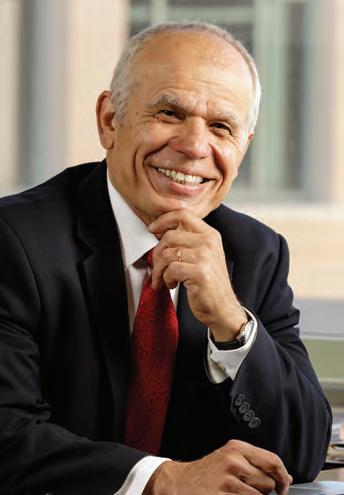
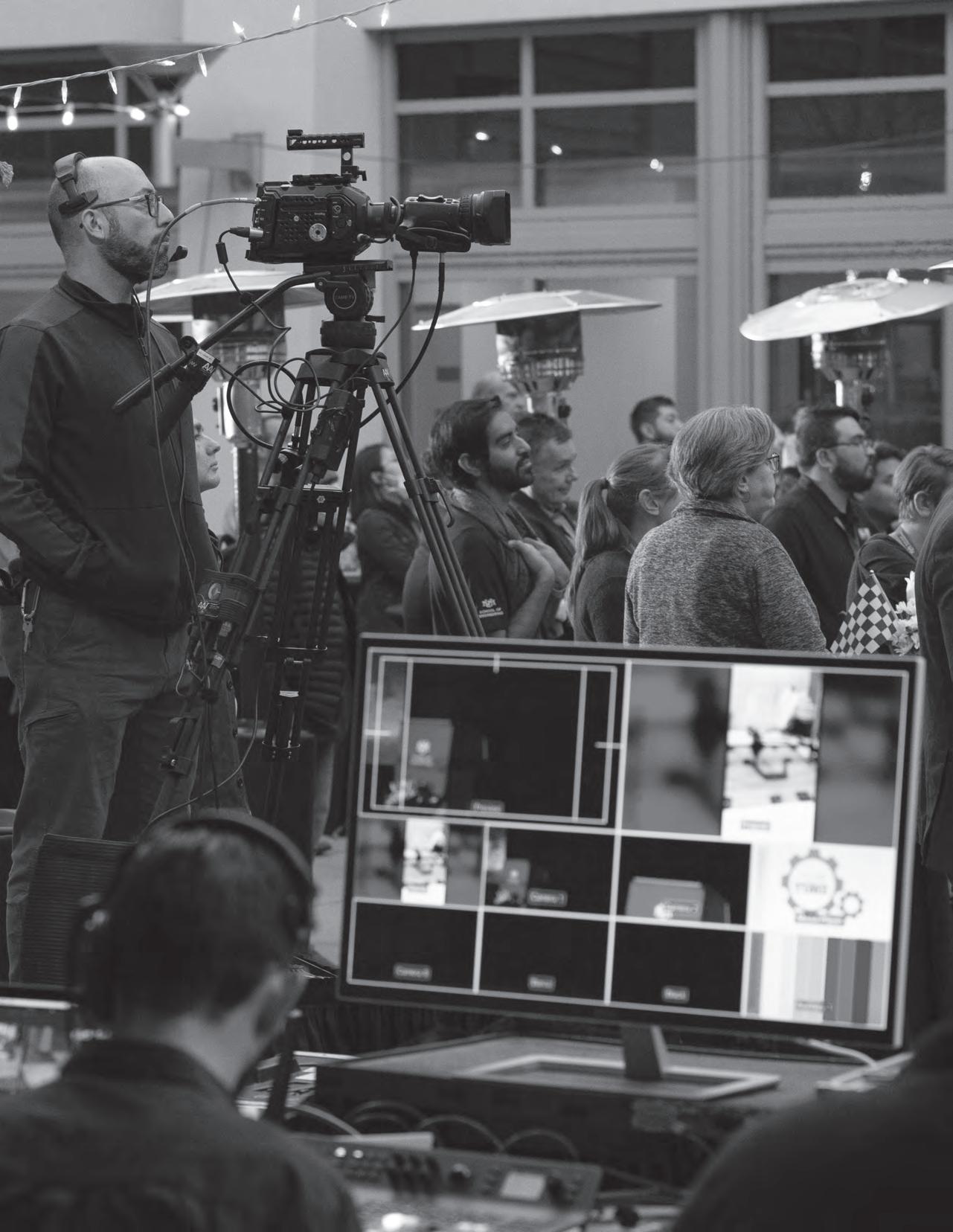

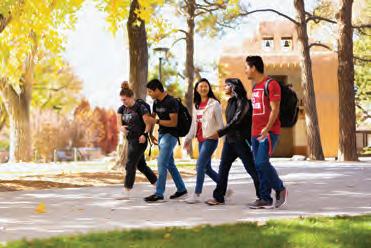
Amidst a crowd of hundreds of supporters in the courtyard of Centennial Engineering Center on a mild evening in early November, the School of Engineering officially kicked off an initiative to raise $50 million to focus on providing students and faculty with the support they need to thrive.
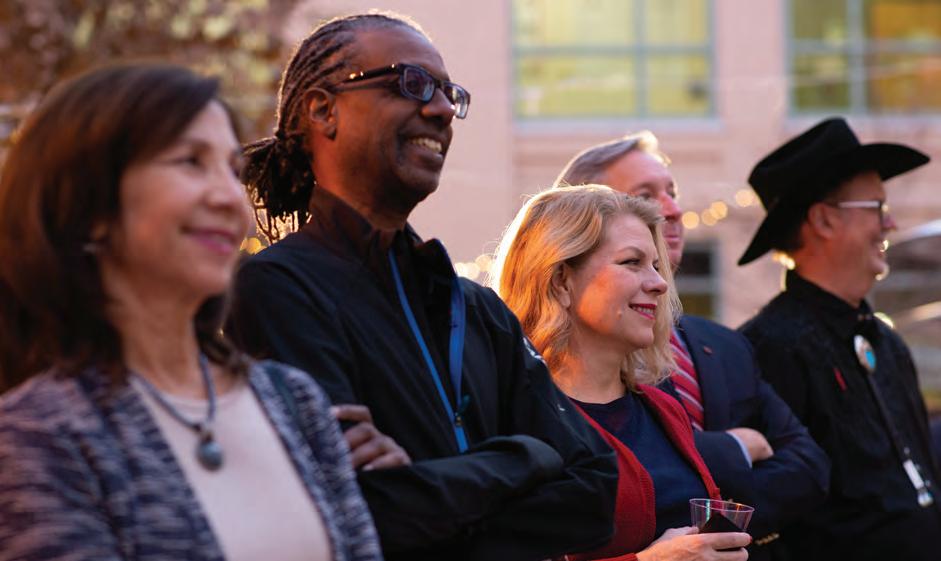
The campaign, called Our Time, was announced at an event that also celebrated the grand opening of the Dana C. Wood FSAE Racing Lab and Garage, which was made possible by a major gift to the School of Engineering in 2018. The campaign, which began in a silent phase in 2018, is set to conclude in 2025.

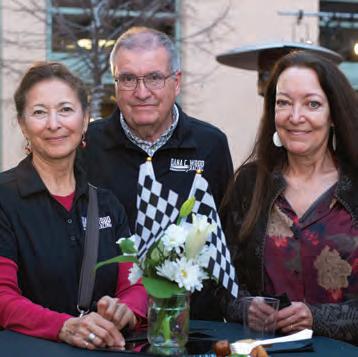
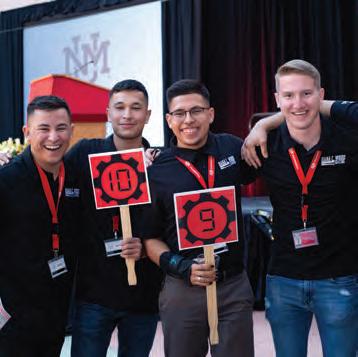
“This fundraising campaign has already enabled us to provide unprecedented support to the students and faculty in the School of Engineering,” said Christos Christodoulou, Jim and Ellen King Dean of Engineering and Computing. “Private donations to the School allow us to do so much more than has ever been done before, from helping students with scholarships and fellowships to providing faculty with funds that can take their research to the next level. The possibilities are endless.”
So far, about $30 million has been raised toward the goal of the Our Time campaign, which began in a silent phase in 2018. The campaign is set to conclude in 2025.
“This fundraising campaign has already enabled us to provide unprecedented support to the students and faculty in the School of Engineering”
CHRISTOS CHRISTODOULOU
“All of this began by reflecting on a dream of doing something boldly different ...”
Although UNM is a public institution that receives funding from the state, that proportion continues to decline, so in order to effectively attract and retain top students and faculty with funding and other benefits offered by competing institutions, additional funding is needed. Examples of the use of such funding are student scholarships and fellowships, funds so students can travel to attend professional conferences, as well as extra funding to advance faculty research, facilities and equipment.
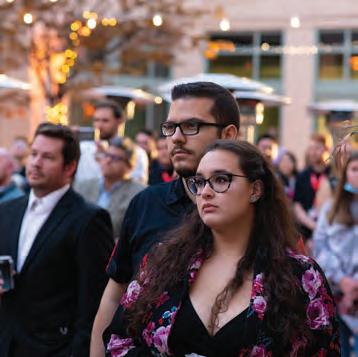
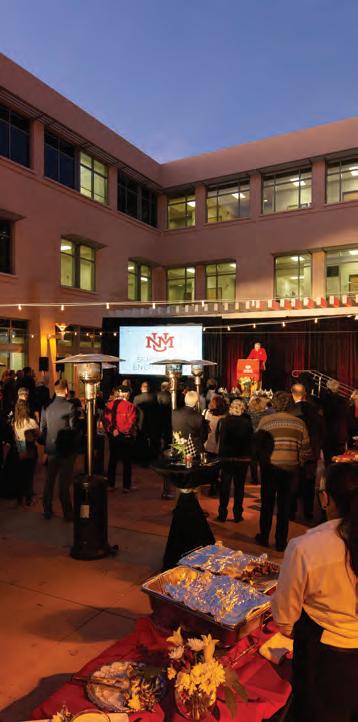
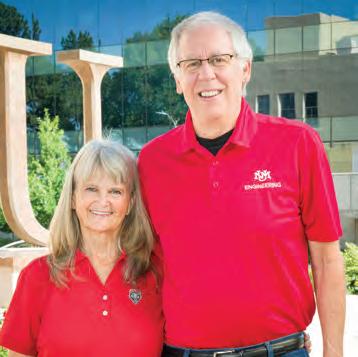
Brian Burnett, who received bachelor’s and master’s degrees from the Department of Civil, Construction and Environmental Engineering in 1978 and 1980, respectively, is chair of the campaign steering committee. He explained that the fundraising effort actually began a few years ago in a “silent phase,” with a group of volunteers reaching out to hundreds of School of Engineering alumni for feedback and guidance to prepare a plan for a more formalized campaign.
“All of this began by reflecting on a dream of doing something boldly different, and this visioning was inspired and guided by Dean Christodoulou,” said Burnett, the former CEO of Bohannan Huston who has remained actively involved with the School since earning his degrees. “I’m extremely honored to officially kick off Our Time: The Campaign for the UNM School of Engineering. It’s our time to shoot for the stars and attempt to raise $50 million over a six-year period, with the money raised going directly

to support the School’s students and faculty. I encourage each of you to consider how you can give back financially to the School to enhance its worldwide impact and further release its untapped potential.”
The two main goals of the Our Time campaign are to empower students and promote faculty excellence. For students, this includes increasing the number and amount of scholarships, as well as fellowship opportunities for graduate students. For faculty, funding is sought to attract and keep highquality professors in the School of Engineering. Funding is being sought for endowed chair and professorships, which generate extra funds annually for the department and the professor holding the title that can be used for research or other programs to benefit students or the department.
The School of Engineering in recent years has attracted a variety of large gifts that have provided resources to students and faculty. In 2018, the School of Engineering received $3 million from the estate of alumnus Dana C. Wood which was the largest cash gift in the School of Engineering’s history. The largest part of the gift, $1.5 million, went toward the 8,000-square-foot Dana C. Wood FSAE Racing Lab and Garage. Another part of the gift, $500,000, went toward the Department of Civil, Construction and Environmental Engineering for the Dana C. Wood Materials and Structures Lab. Finally, $1 million was used to create an endowed position within the Department of Civil Engineering, which will be named the Dana C. Wood Chair for Advanced Construction Materials and Technologies. The position and funds will be used for advanced construction and materials technologies, including 3D concrete printing.
More recently, alumnus Doug Campbell made a $5 million pledge, which is the largest cash gift pledge to the School of Engineering and the 12th largest for UNM to create the Gerald May Department of Civil, Construction and Environmental Engineering. Read more about this gift on Page 6.

Learn more about Our Time: The Campaign for the UNM School of Engineering at ourtime.unm.edu.
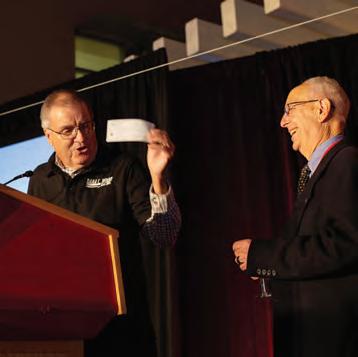
Alumnus Doug Campbell pledges $5 million to create the Gerald May Department of Civil, Construction and Environmental Engineering
A $5 million cash pledge from Douglas Campbell, an alumnus of the department and CEO and co-founder of Solid Power, a Colorado-based all-solid-state electric vehicle battery developer, will create the Gerald May Department of Civil, Construction and Environmental Engineering.
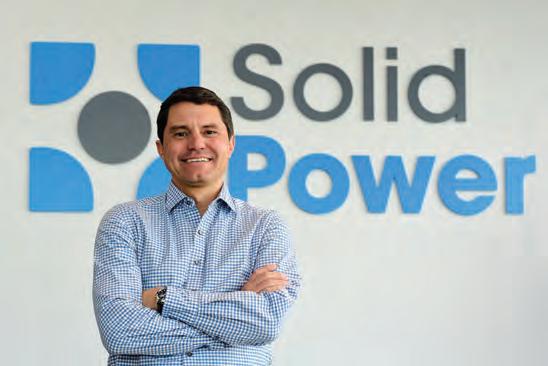
The pledge became official in March 2022.
Gerald May was a longtime professor in the department, School of Engineering dean and UNM president. The department will be renamed upon final payment of the pledge, no later than Dec. 31, 2026.
The $5 million pledge is the largest cash gift pledge to the School of Engineering and the 12th largest for UNM, according to the UNM Foundation records. The Gerald May Department of Civil, Construction and Environmental Engineering will also be the first endowed department in UNM history.

Campbell earned a bachelor’s degree in civil engineering from UNM in 2001, then a master’s degree from the department the next year. Although his degrees are in engineering, he knew early on that his passions were more aligned in the area of entrepreneurship, and he credits a professor he had, Gerald May, with helping him with that realization.
“Upon graduating with my bachelor’s degree, I hesitated to pursue a career in civil engineering,” Campbell said. “I consulted with Dr. May, as I respected him immensely and considered him a mentor of sorts. He encouraged me to pursue a graduate degree as a means of exploring other career opportunities. By
following that advice, I had placed myself on a much different career trajectory that ultimately positioned me to become a successful entrepreneur. That turned out to be very sage advice.”
Campbell is the founder and CEO of Solid Power, a Louisville, Colorado -based company that develops all solid-state, high-energy and safe rechargeable batteries for the electric vehicle market. He previously co-founded and was CEO of Roccor, LLC, which specializes in innovative, high-performance, deployable structures and thermal management solutions for satellite and terrestrial military and commercial markets. Roccor was sold to Redwire Space in 2020, while Solid Power recently became a publicly traded company.
Campbell’s donation will create an endowment, which will generate funds in perpetuity that will go toward a variety of needs in the department, at the discretion of the department chair. These needs include recruiting students to the department; supporting current students, including funding to help send them to professional conferences; funding to attract and retain faculty; and upgrading equipment and facilities to ensure the department stays up to date with current technology and competitive with peer institutions.
Mahmoud Taha, distinguished professor and chair of the Department of Civil, Construction and Environmental Engineering, said that his department will benefit greatly from this donation, helping it accomplish bold goals that have been set, in particular the “12 in 12” initiative Taha established in 2018 to raise $12 million in 12 years.
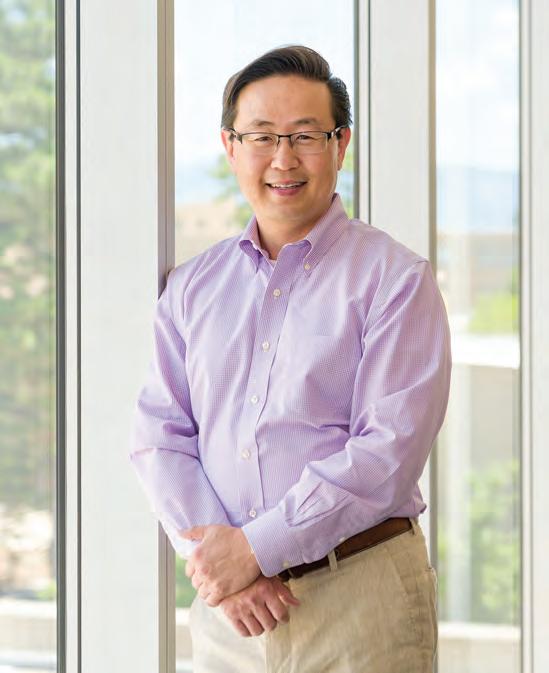
After more than two decades as a faculty member at UNM, Sang M. Han is taking on a new role as chair of the Department of Chemical and Biological Engineering.
Since 2000, he has been a faculty member in the department, joining after a brief stint in the private sector. His primary areas of research are materials engineering for solar photovoltaic (PV) reliability, instability-driven semiconductor quantum materials engineering, and random photonics for structural color rendition and radiative cooling.
A native of South Korea, some members of his family came to the U.S. in the 1960s, with his immediate family settling in Southern California in 1985. After high school, he attended University of California, Berkeley. He earned his bachelor’s in chemical engineering from there in 1993.
He then decided to join a company in thriving Silicon Valley, working briefly as a process engineer for Lam Research, a semiconductor company. The entry-level experience helped him realize that he wanted to continue more intellectual pursuits with a graduate degree. He then enrolled in the University of California, Santa Barbara, earning his Ph.D. in 1998.

After graduating, he rejoined Lam until he found a faculty position, which happened to be at The University of New Mexico. Having lived in bustling California and working in the private sector, he experienced a cultural shift, he said.
One way that Han has stayed connected to the high-energy world of industry is by becoming an entrepreneur himself. Since 2016, he has been chief technology officer of the startup Osazda Energy LLC, a company that generated out of his research on advanced metallization technologies. Osazda’s technology increases the durability of solar cells against stress-induced cracks. In 2018, he was named the STC.UNM (now UNM Rainforest Innovation) Innovation Fellow for commercializing this technology.
He has also had a variety of leadership roles at UNM. Since 2014, he was associate chair of the department and directed the Nanoscience and Microsystems
Engineering Program. Since 2015, he has held the title of Regents Professor.
Han said he sees leadership as the opportunity to give back to the academic community.
“I always consider it a service position,” he said. “I want to help colleagues and raise the profile of our department nationally.”
As chair for the next four years, Han has three main goals. “First, I want to focus on enrollment growth. I know it is not a panacea, but I want to understand effective ways to increase enrollment as well as retain our current students. We currently lose a substantial number between the first and second year,” he said. Second, he wants to make sure the department is wellprepared for the next ABET evaluation, which takes place in 2023. And finally, he wants to make sure early career faculty have the support they need to make it through the tenure process and beyond.
In his free time, Han enjoys learning electric blues and ballroom dancing. He enjoys spending time with his family, his fiancée Katie and his two sons, who are 20 and 18.
Read more about Sang M. Han at engineering.unm.edu
“I ALWAYS CONSIDER IT A SERVICE POSITION,” HE SAID. “I WANT TO HELP COLLEAGUES AND RAISE THE PROFILE OF OUR DEPARTMENT NATIONALLY.”
Growing up, Lydia Tapia was curious about computers, but didn’t have much interest in what would eventually become her area of expertise: computer science.
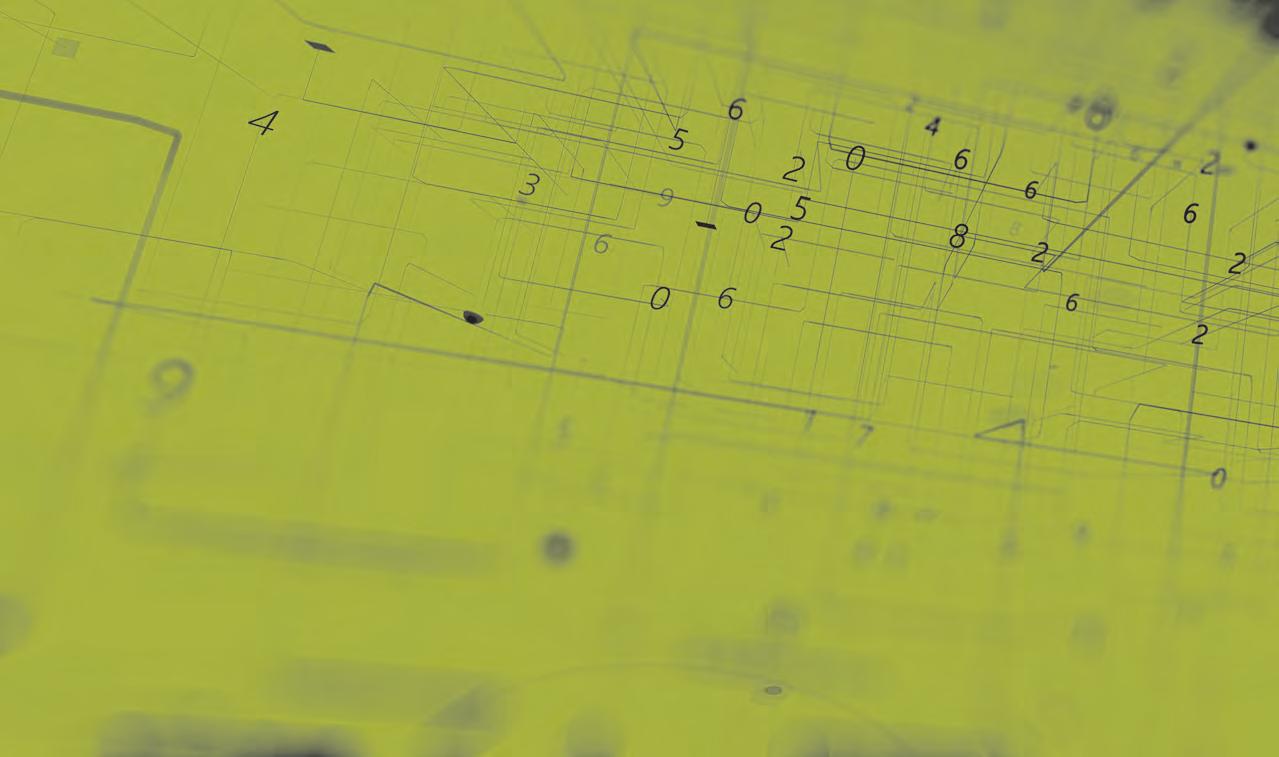
An Albuquerque native, the now-professor and incoming chair of the Department of Computer Science was actually more interested in biology. One of her first exposures to computer science was when she was a student at Sandia High School and became involved in the New Mexico High School Supercomputing Challenge.

“My friends and I signed up because we were strong math students and we got a trip to Glorietta [New Mexico],” she said. “I didn’t even know how to code!”
When she was a senior in high school, she was an intern at Sandia National Laboratories through the Career Enrichment Program. Although she found some of the projects interesting, she wasn’t convinced that a career in computer science was right for her.
Even though she wasn’t set on a career in computer science, she began to make some lifelong connections while at Sandia that would guide her along her path in years to come: Nadine Miner (a UNM Engineering Distinguished Alumni Award recipient), Sharon Stansfield and Jim Pinkerton.
After high school, she began as a student at Tulane University, but not in computer science. “I wanted to do biomedical engineering.”
After graduation, Tapia returned to Albuquerque to work at Sandia. She wasn’t sure what her future held. “I didn’t think about what came afterward.”
Then her mentors encouraged her to pursue graduate school, so she soon enrolled at Texas A&M, with an area of study in computer science with a focus on molecular modeling.
There, she was immersed in her classes and research, pulling the typical late-nighters of a graduate student. She began experiencing some health symptoms, so she visited the student health clinic. She was told it was probably a sinus infection.
But later, she began to experience seizures and her husband, William, rushed her to the ER. Turns out, she suffered two strokes (later attributed to a bloodclotting disorder), temporarily losing her vision, the ability to walk and a lot of her motor skills. At age 24, she was hospitalized for three months at a top stroke hospital in Houston. She had to relearn tasks like walking and grasping a pencil, but amazingly, her verbal and computational abilities were unscathed. Today, she still suffers some slight motor deficits, but she fared considerably better than what doctors at the time thought: “One doctor told me I should quit graduate school and go into telemarketing since I could speak so well.”
The experience changed her. She had to delay her Ph.D. progress for about a year, then return to her studies gradually. She said the experience gave her a greater understanding of people with challenges, which has helped her better understand the struggles that students face. “It made me a lot more empathic, and it also taught me to recognize my limits.”
Tapia earned her Ph.D. in 2009, then took a Computing Innovation postdoctoral fellow position at the University of Texas at Austin. She had to cut that fellowship short when she was offered an assistant professor position at UNM in 2011.
In the last decade, she quickly rose through the ranks, being promoted to full professor the same year she was selected as department chair, the second female
to lead the department at UNM. She has a thriving research enterprise, focusing on artificial intelligence, machine learning, computational biology and robotic motion planning. Among her many awards, in 2016, she received the National Science Foundation CAREER Award.
Now, as department chair, on top of research and teaching, she is balancing budgets, staff and managing overflowing classrooms, thanks to the popularity of computer science. Still, she wouldn’t have it any other way.
“This is the best job in the world,” she said.
She agreed to a two-year term as department chair and has wasted no time in getting to work.
In particular, she would like to improve the academic advising experience, as well as the tutoring and mentoring, all with the goal of improving retention. She is excited about a new Section Leader Program, championed and funded by computer science alumna Polle Zellweger and her husband Jock Mackinlay, which develops leadership skills by tasking senior-level students with teaching material to newer students. The program, started at Stanford, has been proven to benefit both leader and pupil.
She and her husband, William, have a daughter, Iliana, 13.
Tapia credits a lot of her success to mentors she found along the way, which she didn’t even seek out, as well as a lot of opportunities that spun off from her hard work. Now, she said, all those forces are coming together to give her the momentum she needs to succeed as a leader.
“I’ve had a serendipitous life to bring me to where I am today.”
Read more at engineering.unm.edu

The following faculty members joined the School of Engineering in the 2022–23 academic year:
Eric J. Lang, assistant professor of nuclear engineering. Lang joins UNM from a postdoctoral position at Sandia National Laboratories. His research focuses are in electronic microscopy and spectroscopy techniques; plasma-material interactions; ultra-high vacuum technology; and metallurgy and material fabrication.
Heng Zuo, assistant professor of mechanical engineering. Zuo was previously at the Space Nanotechnology Lab at Massachusetts Institute of Technology. Her areas of research interest are in fabrication and correction of astronomical optics, and space optics development and applications.
Lisa Lorena Losada-Rojas, assistant professor in the Department of Civil, Construction and Environmental Engineering. She earned her Ph.D. in civil engineering from Purdue University in May. Her concentrations are in transportation and infrastructure systems engineering.
The School of Engineering is welcoming several new leaders this academic year:
Professor Sang M. Han is beginning a four-year term as chair of the Department of Chemical and Biological Engineering.
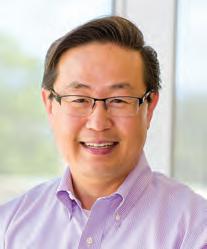
Professor Lydia Tapia is beginning a two-year interim chair appointment in the Department of Computer Science.
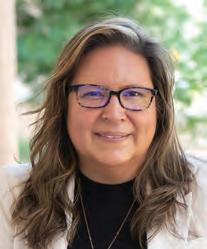
Mark Stone, a professor in the Department of Civil, Construction and Environmental Engineering, is serving as acting associate dean of academic affairs and community engagement during the fall 2022 semester.
Professor Mark Gilmore is serving as acting chair of the Department of Electrical and Computer Engineering for the fall 2022 semester.
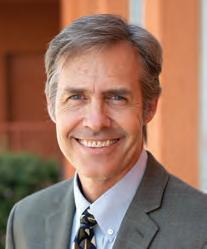
Andrew Schuler, professor in the Department of Civil, Construction and Environmental Engineering, is director of the Center for Water and the Environment .

Brian Zufelt is interim director of COSMIAC.
Matthias Pleil is director of the Manufacturing Engineering Program.
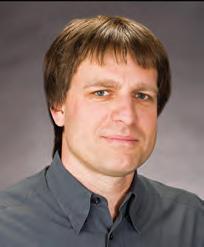
Nathan Jackson, assistant professor of mechanical engineering, is the director of the Nanoscience and Microsystems Engineering Program.
Nick Carroll, an assistant professor in the Department of Chemical and Biological Engineering, has been selected as part of the 2021 Class of Influential Researchers by the American Chemical Society journal, Industrial & Engineering Chemistry Research.
David G. Whitten, distinguished professor in the Department of Chemical and Biological Engineering and associate director of the Center for Biomedical Engineering, has been inducted into the National Academy of Inventors.

Sakineh Chabi, assistant professor in the Department of Mechanical Engineering, has been selected as a Vebleo Fellow in recognition of her contributions to the organization. Vebleo is an international scientific organization working to encourage researchers, scientists and companies in the fields of science, engineering and technology.
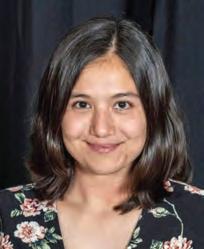
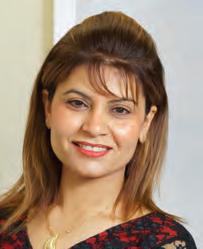
Christos Christodoulou, Jim and Ellen King Dean of Engineering and Computing, received the IEEE Rudolph E. Henning Distinguished Mentoring Award.
Abdullah Mueen, an associate professor in the Department of Computer Science, received the ACM SIGKDD Test of Time Award. The award honors research that is at least 10 years old and has been recognized as having a sustained influence over the years since its publication. ACM SIGKDD stands for the Association of Computing Machinery Special Interest Group in Knowledge Discovery in Data.
Eirini Eleni Tsiropoulou, assistant professor in the Department of Electrical and Computer Engineering, is the general chair of the 2023 IEEE 24th International Conference on High-Performance Switching and Routing (IEEE HPSR 2023), which will be held in Albuquerque June 5-7. HPSR is the flagship conference of the Communications Switching and Routing Technical Committee of IEEE Communications Society.
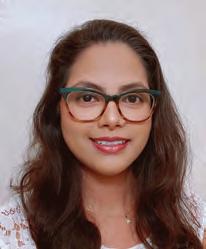
Mohamed El-Genk, a Distinguished and Regents’ Professor in the Department of Nuclear Engineering, received the 2021 American Nuclear Society Reactor Technology Award.
Natalie Gayoso, a master’s student in the Department of Civil, Construction and Environmental Engineering, won a national award for her presentation at the American Water Works Association ACE22 conference, held June 12-15 in San Antonio, Texas. She presented “Techno-Economic Analysis of Condensation-Based Atmospheric Water Harvesting” at the Fresh Ideas poster session and received second place. Gayoso is studying with assistant professor Anjali Mulchandani.
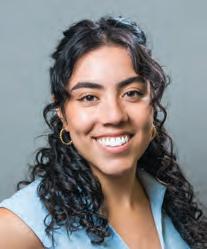
Christine Gleicher, a student in the Department of Chemical and Biological Engineering, was selected as a 2022-23 Goldwater Scholar.
Khandakar Nusrat Islam, a doctoral student in the Department of Electrical and Computer Engineering, received the 2022 IEEE Nuclear and Plasma Sciences Society Igor Alexeff Award as Outstanding Student in Plasma Science.
Elijah Wyckoff, a graduate student in the Department of Mechanical Engineering, received the Air Force Research Laboratory Outstanding Scholar Award for his work on augmented reality for real-time telepresence and control of robotics.
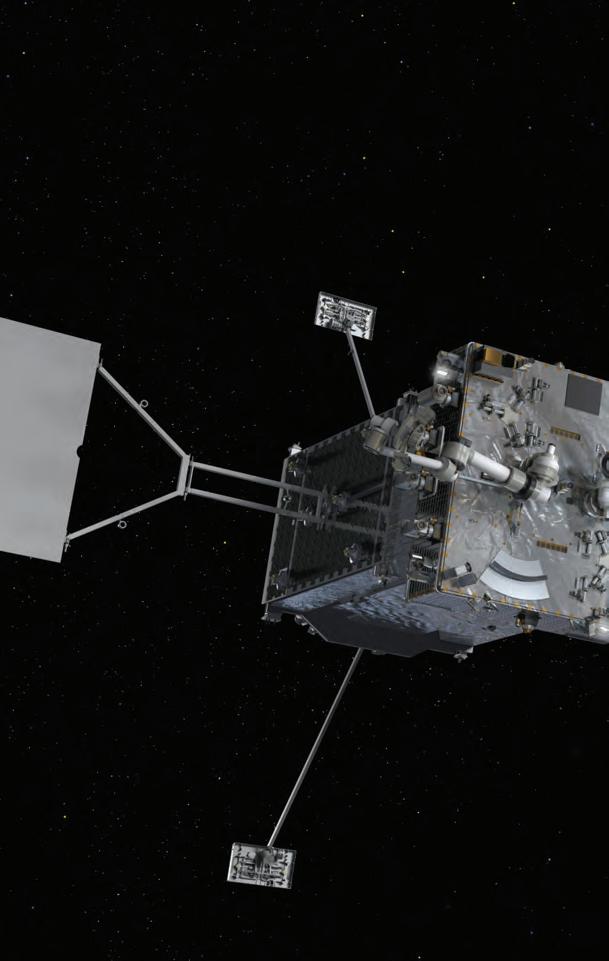

Francesca Cavallo, assistant professor in the Department of Electrical and Computer Engineering, received the National Science Foundation Faculty Early Career Development (CAREER) award. Cavallo’s project is “Spintronic Devices Using Screw Dislocations in Single-Crystalline Semiconductors.” The project’s goal is to investigate the device physics of a novel spin field-effect transistor while broadening the participation of deaf, Hispanics and Native Americans in nanoscience and engineering. The work will be the first experimental study to focus on the fabrication and characterization of spin FETs that leverage screw dislocations in conventional semiconductors. The improved knowledge and technological advances generated in this project will potentially accelerate very large-scale integration of high-performance spintronic devices, which is required for the practical realization of hybrid and entirely spin-based classical and quantum computers.
Several researchers from the Department of Nuclear Engineering were selected for funding from the U.S. Department of Energy for various nuclearrelated projects as part of $61 million awarded to 74 nuclear energy projects across the country. The awards were made as part of the Nuclear Energy University Program support nuclear technology development, infrastructure improvements and career opportunities.
Minghui Chen, an assistant professor of nuclear engineering, is the principal investigator of “ARISE: Advanced Reactors Integral and Separate Effects Tests — An Integrated Research and Education Program.” For this project, he was one of five to receive the Distinguished Early Career Award Program award, which was given out for the first time this year by DOE’s Office of Nuclear Energy as the most prestigious award for faculty members beginning their careers.
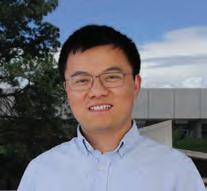
NEUP funding was also awarded to Mohamed El-Genk, Distinguished and Regents’ Professor in the Department of Nuclear Engineering and
founding director of the Institute for Space and Nuclear Power Studies, and Timothy Schriener, research assistant professor of nuclear engineering and senior member of the Institute for Space and Nuclear Power Studies, for “Demonstrating Autonomous Control, Remote Operation, and Human Factors for Microreactors Under Prototypic Conditions in PUR-1.” UNM faculty are collaborating with Curtiss-Wright Nuclear Division and Argonne National Lab on the Purdue University-led project.
Also, Osman Anderoglu, associate professor of nuclear engineering, is a collaborator on the University of Kentucky-led project along with Los Alamos National Laboratory, on “Development of Irradiation and Creep Resistant High-Cr Ferritic/
UNM is part of a consortium that will pioneer research into robotic inspection, maintenance and manufacturing of satellites in orbit.
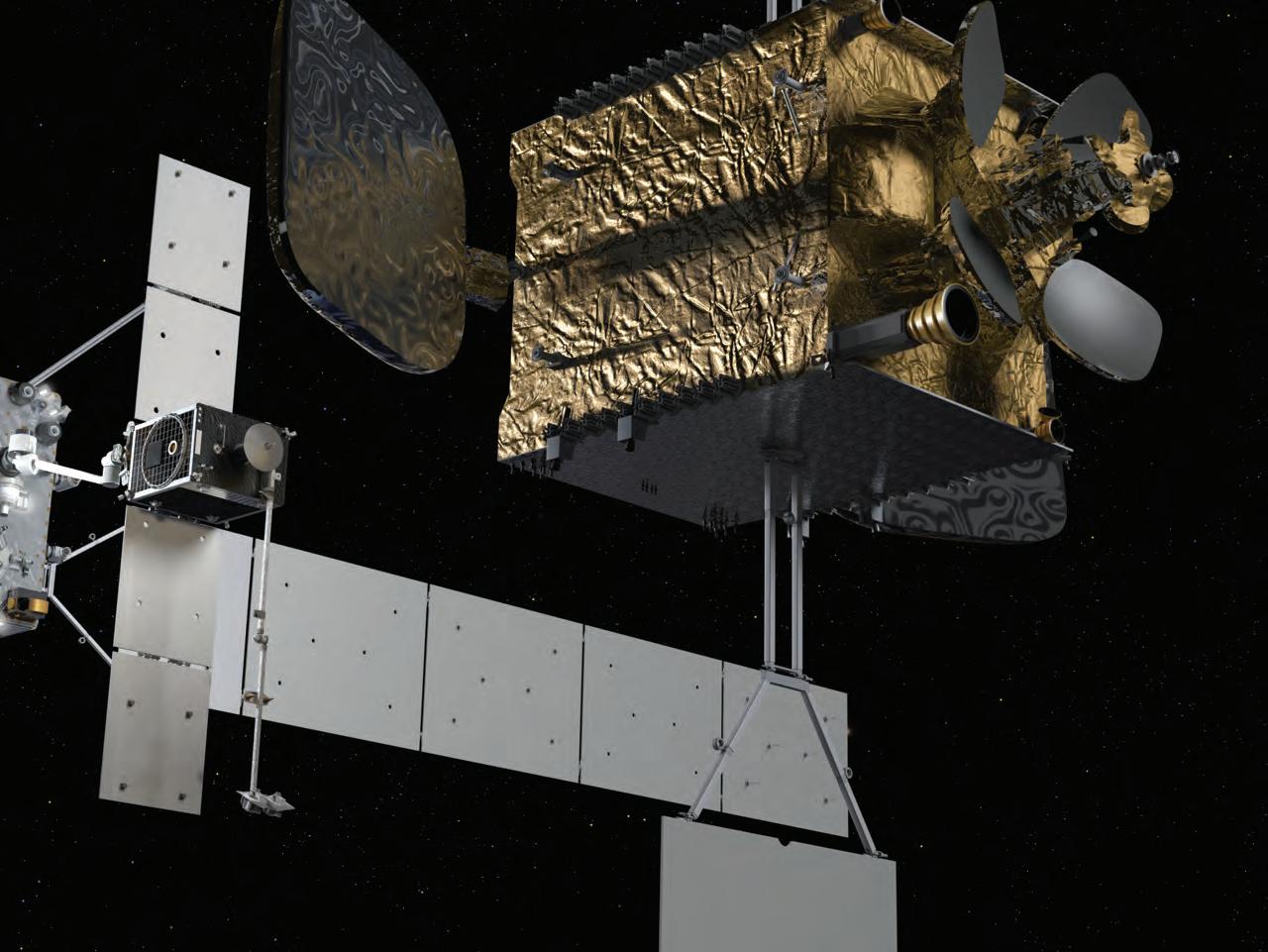
Martensitic Steels via Magnetic Field Heat Treatment.” The project will develop and test a new generation of ferritic/martensitic steels specifically designed for advanced reactors that will exceed the current limitations due to temperature and irradiation dose.
Researchers from UNM School of Engineering are part of a multi-institutional consortium selected by the Air Force Research Laboratory and the Air Force Office of Scientific Research to pioneer research into robotic inspection, maintenance and manufacturing of satellites and other structures while in orbit. AFRL and AFOSR selected the Carnegie Mellon Universityled proposal, “Breaking the ‘Launch Once, Use Once’ Paradigm,” as part of the newly established Space University Research Initiative. Rafael Fierro,
a professor in the Department of Electrical and Computer Engineering, is leading the project at UNM. The main goal of the project involves developing a way to repair, maintain and upgrade the 6,500 satellites that are currently in orbit.
The Institute for Space and Nuclear Power Studies at UNM has been selected to receive a NASA Early Stage Innovation 2021 research award to develop advanced lightweight heat-rejection radiators for future space nuclear power and propulsion systems. The research will pave the way for future missions to Mars and the moon. The project, “Advanced Lightweight Heat Rejection Radiators for Space Nuclear Power Systems,” is led by Mohamed El-Genk, Timothy Schriener and Osman Anderoglu.

UNM leads National Science Foundation collaborative project to increase diversity among STEM faculty
Ensuring our campuses are as diverse as the population at large has long been a goal of university leaders, especially in the STEM fields, which have historically lagged other disciplines. But while the goal is widely accepted, the pathway to success has been less clear.
Realizing that many top-down guidelines to improve diversity among faculty do not motivate stakeholders to change their behavior, a new research effort led by The University of New Mexico is taking a different approach: seeking the ideas and feedback from faculty first to guide strategic decisions on how to broaden participation.
“AGEP to Engage Leaders to Improve Diversity among STEM Faculty” is a two-year, $195,000 project led by principal investigator Mala Htun, a professor of political science, along with Liz Godwin, a research associate professor in the Department of Electrical and Computer Engineering and a 2021–22 UNM Inclusive Excellence Postdoctoral and Visiting Scholar; and Jesse Alemán, a professor in the Department of English Language and Literature and the associate dean of Graduate Studies and special assistant for equity and excellence in graduate education in the College of Arts and Sciences.
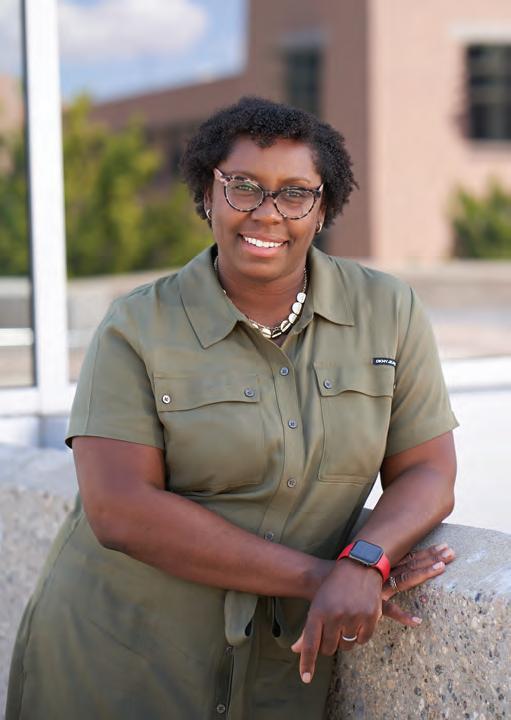
The UNM team is collaborating with Arizona State University and University of Oregon on the project. The three institutions share several distinctions: they are very high research activity (R1) universities located in Western states; they have a commitment to advancing the success of people who are historically underrepresented in the science, technology, engineering and math fields; and two of the three partners have an NSF ADVANCE (Advancement of Women in Academic Science and Engineering Careers) program in place at their institutions.
The ultimate goal of this NSF Alliances for Graduate Education and the Professoriate (AGEP) Catalyst Alliance project is to position the three universities to apply for an Institutional Transformation Alliance award as early as next year. These efforts are important because improving equity and inclusion is critical to advancing STEM faculty, educating America’s future STEM workforce, and fostering individual opportunity, all of which is crucial for a thriving U.S. economy.
“We aim to develop a set of strategies and guidelines that can help attract and retain faculty from underrepresented groups in the science and technical fields. Ultimately, we strive for institutional transformation with changes that will impact not just faculty but also graduate students and postdoctoral researchers,” Godwin said.
The catalyst stage of the research will focus on four main activities: diagnosing challenges to broadening Ph.D. student and faculty participation through a quality-of-life survey at each partner institution; creating a pilot program for managerial engagement to build a sense of buy-in and ownership from the leaders; developing a five-year equity plan at each partner institution; and developing and refining an effective working alliance between the three universities.
Godwin said the team is seeking the ideas and input from a large and varied group of deans and department chairs in all the STEM disciplines to listen to their ideas and concerns. After the initial group meeting, the research team will start identifying themes that come out of the meeting and creating a quality-of-life survey to distribute among faculty, graduate students and postdocs that will provide the group with data. The partner institutions will hold similar meetings, and the team will work together to craft the climate surveys to launch by fall 2022.
The School of Engineering has started a program designed to give corporate partners an inside track to some of our brightest engineers and computer scientists while also providing career opportunities to students.
The Corporate Affiliate Program is addressing the need in high-tech fields to provide companies with skilled and motivated problem solvers and thinkers to work on resolving modern challenges of critical global importance.
Benefits for students include:
Internship and traineeship programs
Professional development, such as participating in regional and national conferences.
Keeping our talent in New Mexico by offering firstyear scholarships to talented New Mexico high school seniors.
Financial assistance with tuition and fees when emergencies arise.
Outreach programs for K-12 students.
Some of the benefits to companies include:
Presence on campus and targeted interactions with students
Dedicated space and time to interview potential employees
Brand visibility
Direct access to internships and jobs coordinator
Promoted information sessions and tabling events
Participation in signature School of Engineering events
One of the first companies to sign on for the Corporate Affiliate Program was the Department of Energy’s Kansas City National Security Campus (KCNSC)
managed by Honeywell Federal Manufacturing & Technologies, which includes the New Mexico Operations site.
David Cochrell, engineering manager for the New Mexico Operations site, has been working with UNM as the campus representative. He said that KCNSC is charged with delivering trusted national security products and government services, producing 80% of the country’s non-nuclear components. Creating partnerships with universities is crucial to their success, he said.
“Our company continues to grow at a rapid pace with a growth strategy that includes partnering with universities for recruitment, research, education and outreach,” Cochrell said. “While we have always collaborated with UNM, the Corporate Affiliate Program formalizes that partnership and ramps up our collaboration.”
Since becoming a part of the program, he said that KSNSC has benefitted, particularly in meeting the ever-growing need for engineering talent the organization demands.

“Recruitment has been successful as we have hired engineering and internship positions among many others, creating a pipeline to hire local talent at our New Mexico Operations,” he said.

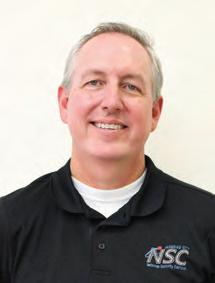
The proceeds from annual Corporate Affiliate Program memberships provide quality educational and career development opportunities to School of Engineering students.
For more information about the Corporate Affiliate Program, including membership tier packages, contact Elsa Castillo or Nada Abdelhack at Engineering Student Success Center at ess@unm.edu or (505) 277-4354 or visit cap-engineering.unm.edu.
success, becoming what is believed to be the first team to sample uncontaminated gases from an erupting volcano for later carbon isotope analyses. This resulted in a treasure trove of data to help better understand the course of the eruption.
When an interdisciplinary team from The University of New Mexico was awarded a four-year, $1.5 million grant from the National Science Foundation in 2020, the goal was to develop novel, bio-inspired software and drones to measure and sample volcanic gases.
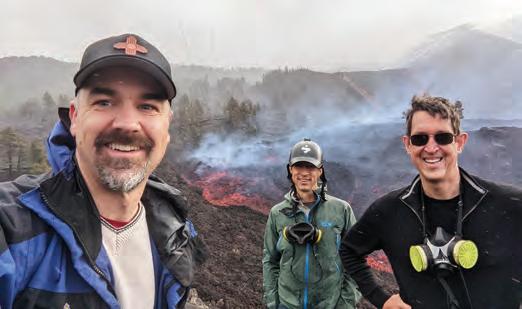
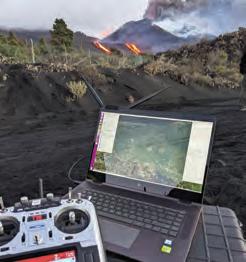
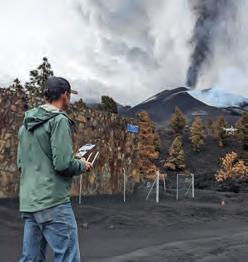
One year later, the Project VolCAN team got a spectacular opportunity to do just that — and make history in the process by becoming what is believed to be one of the first research teams to collect uncontaminated gases from an active volcanic eruption.
In late November 2021, UNM’s team flew a drone into the erupting Cumbre Vieja volcano at La Palma Island in Spain’s Canary Islands. The eruption, which began in September and ended in late December, was the largest in Europe in 500 years. Volcanic lava flows from Cumbre Vieja destroyed more than a thousand homes and covered significant parts of the Western side of the island with ash.
It is a dramatic and devastating occurrence but was a rare and perfect opportunity for the VolCAN team to put its resources to the test, so they did just that — navigating all the physical and bureaucratic hoops to make their way to the island with five drones and a handful of team members with the mission of collecting gas samples by flying drones into the volcano. The VolCAN team was one of several international research groups working on the eruption of Cumbre Vieja the time.
As the research team directed the UNM-programmed autonomous drones into the gas plumes, they protected themselves from the noxious gases by donning military-grade gas masks. But their risky efforts were a
“The robot missions couldn’t have gone better,” said Matthew Fricke, one of the principal investigators on the VolCAN project and a research assistant professor of computer science. “We got uncontaminated gas samples from the plume that told us where the magma causing the eruption was coming from. No one has ever been able to do that during an eruption before. That data allows us to try and forecast the duration and intensity of the eruption.”
After collecting the gases, the team made CO2 concentration transects of the plume and obtained video footage of the eruption. These gas samples were analyzed for carbon isotopes in
collaboration with and using instrumentation of the local scientists on La Palma. The obtained data provides new insights into the nature and depth of the magma source in near real-time. This information, together with other data collected by numerous scientists from local and international institutions, will result in forecasts about the ongoing and future volcanic activity.
VolCAN is a collaboration between the School of Engineering (Departments of Computer Science, and Electrical and Computer Engineering) and Earth and Planetary Sciences. It is led by Fricke, Melanie Moses and Jared Saia, faculty in the Department of Computer Science; Tobias Fischer, a professor and Scott Nowicki a Research Professor in the Department of Earth and Planetary Sciences; Rafael Fierro, a professor in the Department of Electrical and Computer Engineering; and John Ericksen, a research assistant in computer science.
Anjali Mulchandani joined the Department of Civil, Construction and Environmental Engineering in January 2021, right at the heart of the COVID-19 pandemic. Originally from Southern California, she earned her bachelor’s degree from University of California, Los Angeles, then earned her master’s and Ph.D. from Arizona State University. She completed her postdoc at Stanford University, right before joining UNM.

I wanted to solve grand challenges and environmental problems. I was interested in how to bring about change, and academia has the ability to do this through coming up with ideas that can be applied to the real world.
I am focused on finding solutions for our water crisis. There are three areas our group studies, which are 1). Diversifying your water portfolio, which includes a mix of traditional water sources like surface and groundwater, as well as non-traditional sources like the atmosphere, as in water capture methods like dehumidification of the air, and water reuse; 2). Resource recovery, in which we find methods to separate and recover valuable products in wastewater, and 3). Environmental remediation, in which we develop safe methods to clean water that is impacted by natural and human-caused contamination. All of these research areas have opportunities as well as significant challenges that need to be solved. An interdisciplinary, collaborative approach will be needed to solve these grand challenges.
I chose it because everyone needs water to survive. There is still not equitable access to water for all people living on Earth. UNM was a great place to be because of its location in the Southwest and the water challenges we face here, as well as collaboration with the Center for Water and the Environment, the Grand Challenge for Sustainable Water Resources, and the Metals Exposure and Toxicity Assessment on Tribal Lands in the Southwest (METALS) Superfund Research Center. Everyone understands how important water is here and is working together towards finding solutions.
Communication and outreach are key focuses of your work. What makes you passionate about that?

I’m passionate about teaching students about science communication. Communication and outreach of our research is integral for the broader public and policy makers to be aware of new advances and challenges. Science communication is a skill that our students can build that will help them with their own growth and prepare them to enter the workforce. I’m involved in UNM’s Grand Challenges (Sustainable Water Resources), and this spring, I worked with students in the first Grand Challenges Water Science Communication Scholarship.
I like hiking and camping in New Mexico. I am also a member of Toastmasters because I want to continue to improve how I communicate with various communities and cultures.
Brian and Celia Burnett and their family — with eight degrees among them, so far — understand the importance of leaving a strong legacy, not just for their family, but for their UNM Engineering family as well.
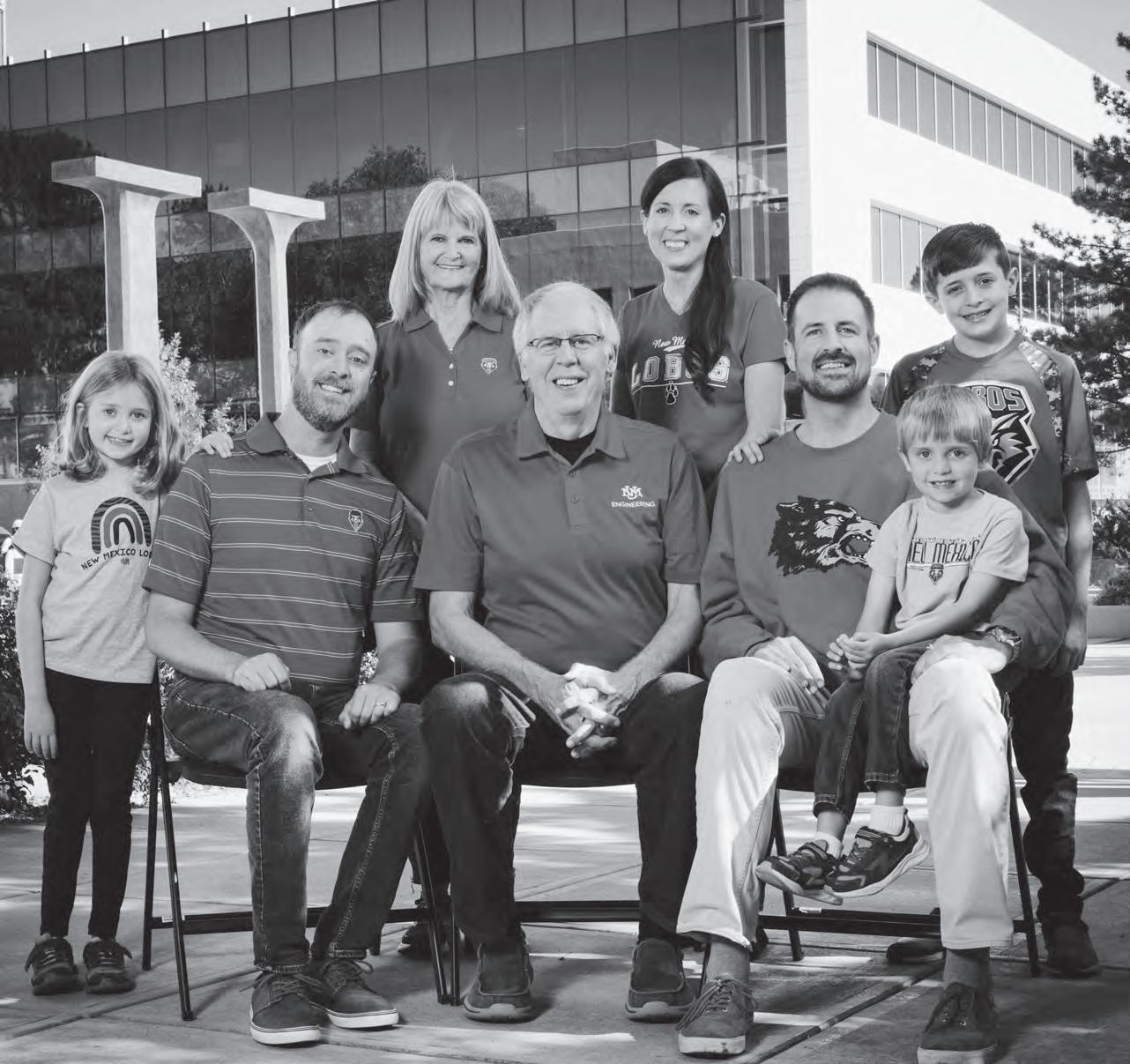
The Burnetts made an estate gift to the School of Engineering because they believe in the power of estate planning — making a commitment now that will result in changed lives in future years.
invite you to make UNM Engineering part of your family by learning more about the potential of an estate gift. Contact us today to discuss your many options.